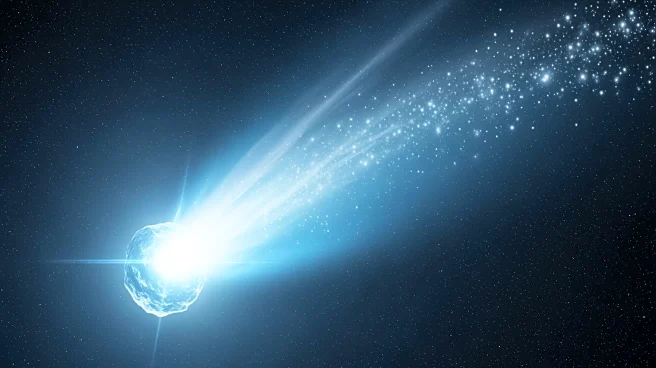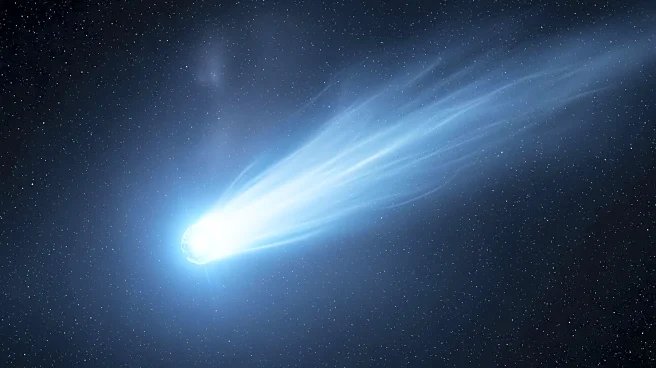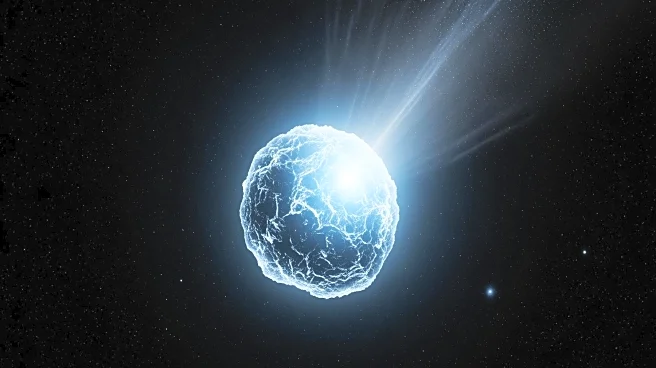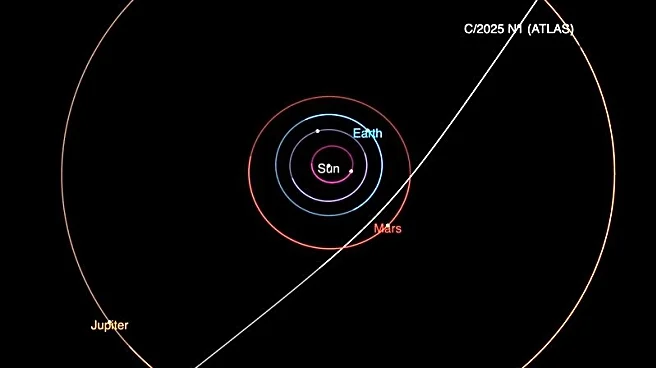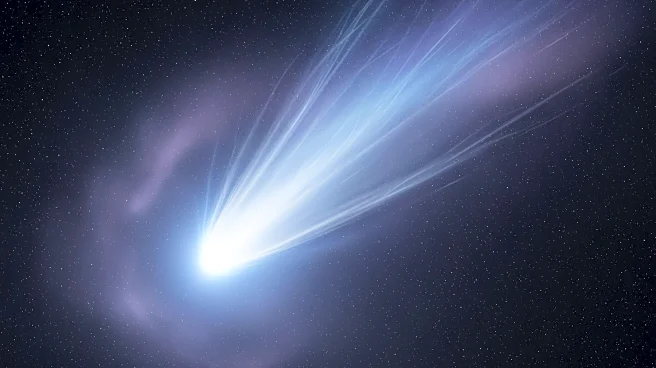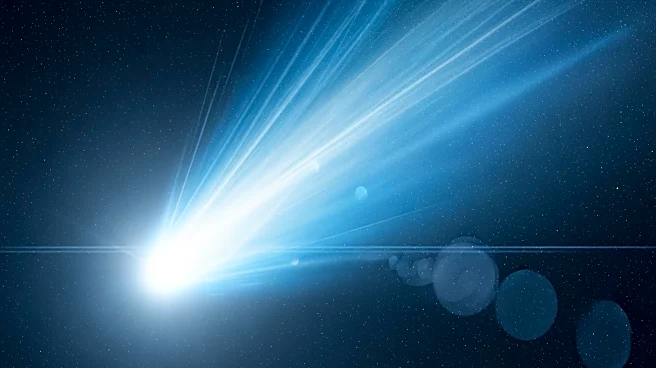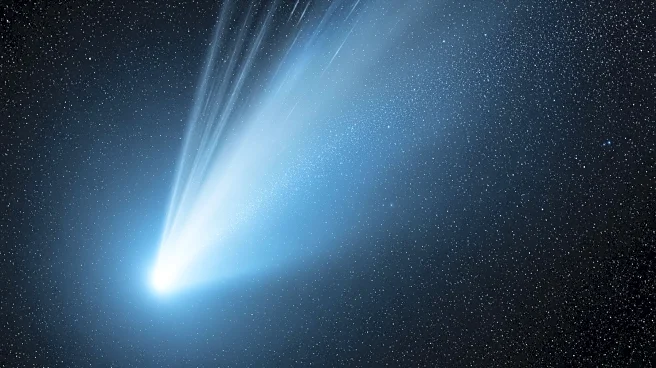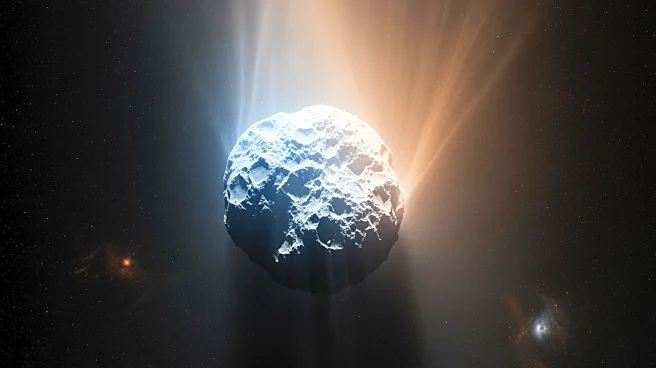What's Happening?
NASA has officially confirmed that the interstellar object 3I/ATLAS is a comet, countering speculation that it might be an alien spacecraft. This announcement was made during a press briefing where NASA released
images of the comet, which was first discovered in July. The comet has been observed over four months, and NASA's analysis shows no evidence of technological signatures that would suggest it is anything other than a comet. The speculation originated from Harvard University professor Avi Loeb, who suggested the object could be an alien probe based on its trajectory and composition. However, NASA's Nicola Fox emphasized the natural curiosity surrounding such objects but reiterated the comet's non-technological nature. The comet was first observed at the ATLAS observatory in Chile and is the third known object from outside our solar system currently passing through it.
Why It's Important?
The confirmation of 3I/ATLAS as a comet rather than an alien spacecraft is significant for scientific understanding and public perception. It underscores NASA's role in providing evidence-based conclusions about celestial phenomena, which helps dispel unfounded theories that can cause public concern. The study of interstellar objects like 3I/ATLAS offers valuable insights into the composition and behavior of bodies from beyond our solar system, contributing to the broader understanding of the universe's formation and evolution. This event also highlights the importance of international collaboration in space observation, as the comet was first detected in Chile. The ongoing observation of 3I/ATLAS will continue to provide data that could inform future space exploration missions.
What's Next?
NASA plans to continue monitoring 3I/ATLAS as it travels through the solar system, particularly as it approaches Jupiter's orbit next spring. The comet is expected to make its closest approach to Earth on December 19, at a distance of about 170 million miles. This continued observation will involve multiple spacecraft, allowing scientists to gather more data on its composition and trajectory. The findings could enhance understanding of interstellar objects and their origins, potentially informing future missions aimed at exploring such bodies. The scientific community will likely remain engaged in analyzing the data collected, contributing to ongoing discussions about the nature of interstellar visitors.
Beyond the Headlines
The discussion surrounding 3I/ATLAS touches on broader themes of scientific inquiry and public interest in extraterrestrial life. The speculation about alien spacecraft reflects a cultural fascination with the possibility of life beyond Earth, which often intersects with scientific exploration. This event highlights the need for clear communication from scientific institutions to manage public expectations and prevent misinformation. Additionally, the study of interstellar comets can provide insights into the materials and conditions present in other parts of the universe, offering a glimpse into the processes that shaped our solar system and others.
